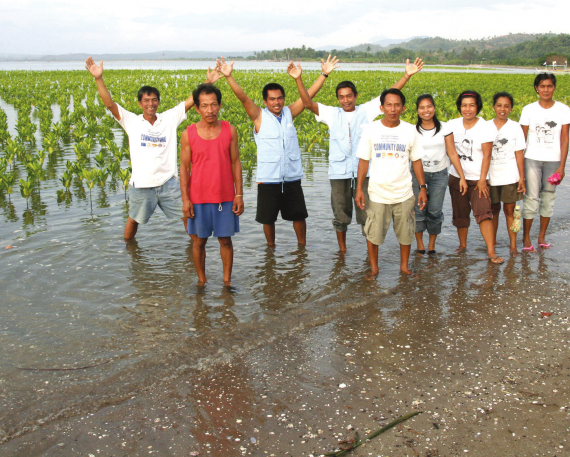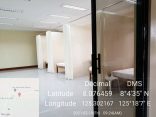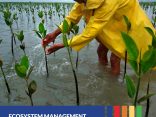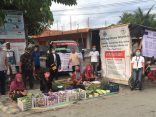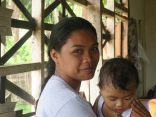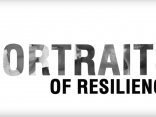The shoreline along the east of Cagsao, a coastal village in Calabanga, Camarines Sur, is thickly covered with mangrove trees of almost 2 meters high. In less than three years, these trees will be fully grown for the community to reap its benefits. At the other end is a 126-meter gabion wall, built by the community to serve as barrier during storm surges and to to stabilize the beach ridge.
Three years ago, this sight was merely a dream shared with the communities. Tiyang Mely, who lives a few meters from the beach recounted that there used to be more houses built near the shoreline but strong typhoons destroyed them. Cagsao is one of the 11 coastal villages in Calabanga that normally experience strong typhoons. During typhoons, wind-driven water would flood the area and sweep the houses away. Frequent storm surges and the absence of beach protection contributed to the coastal erosion, which later on, caused the displacement of several families living in the shoreline.
In 2007, Cagsao was among the communities covered by the ACCORD project, which introduced natural resource management as small-scale mitigation activity that will help reduce the adverse impacts of disasters. For Cagsao, mangrove reforestation and installation of gabion as breakwater were recommended.
At first, some community leaders were hesitant about these recommendations since they have had prior experience of unsuccessful reforestation projects. They were sceptical with the proposed mangrove reforestation and construction of gabions along the beach ridge. Instead they instantly proposed for the construction of dikes and breakwater as mitigation projects.
The then Barangay Captain Ramon Sta. Ana told the ACCORD project coordinators that resources were only wasted due to the low survival rates of the trees that were planted in their village. In fact there were bamboo seedlings left unplanted because very few people were willing to participate in the activity. Furthermore, gabion is a new technology that the community have never heard of.
Indeed, participation of community members was a challenge faced at the onset of project implementation. The installation of gabion and planting of mangrove trees require manual labour of volunteers who will not be paid for their service. Public awareness activities were essential to address this concern. At every sub-village then, come rain or shine, night and day, discussions on the small-scale mitigation project were conducted. The villagers were consulted and informed on every detail of the project.
Barangay Captain Sta. Ana, despite his speech difficulties (he has suffered at least six strokes already), would painstakingly explain the benefits of the project to seek support from the rest of his fellow villagers. Trainings were also held with the help of expert engineers to demonstrate the gabion technology to the community. Aside from the technical trainings, ACCORD also built on the capacities of barangay leaders and community members on disaster risk reduction.
Educating the community members on their respective roles in the project implementation was one of the important factors that revived the tradition of community volunteerism and contributed to its success. On a daily basis, community members would wake up, go to the gabion worksite, and take on different tasks at hand.
Volunteers were delegated with work according to their capacity. Men would do the manual labours while the women and elderly made sure that the food is available for the volunteers. They were also in charge of attending to medical emergencies in case of accidents at the worksite. To supervise these activities and ensure that the problems encountered are swiftly addressed, a Project Management Team was organized. The PMT have gone to the neighbouring barangays and schools to mobilize volunteers who rendered free labour for the project.
The project was fully supported by the municipal government, which consistently provided its assistance from the start. When ACCORD Project ended, the local government took on the responsibility of ensuring the sustainability of mitigation activities in Cagsao and in other barangays of Calabanga.
Collaboration with other private organizations was also sought. From 30,000 propagules planted during ACCORD, additional 150,000 mangrove trees were planted at the second phase of ACCORD Project in partnership with private organisations. Expansion of mangrove areas continued during ASCEND.
Today, the sight of gabion and mangrove trees covering almost 3 hectares of shoreline gives an inspiring feeling for visitors and environment enthusiasts. But for Tiyang Mely, Barangay Captain Sta. Ana, and the rest of the residents, the gabion and mangrove trees are their sources of pride and hope.
Pride, because they were able to show that the collective contribution of each member of the community can transform into something beneficial for them. And hope, because they are now beginning to experience the benefits of the gabion and mangrove trees, aside from protection from storm surges, it also contributed to the sustainable management of natural resources.
Fisher folks have attested that with mangrove forests being revived, fish, crabs, shrimps, and other marine life is starting to recover, crucial to the eventual revival of the entire marine ecosystem in the area.

